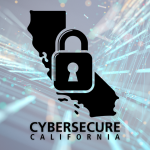Your standard OOO message often includes:
- Your name and title
- Exact dates you’re away
- Names and e-mail addresses of alternate contacts
- Sometimes even details like the conference you’re attending or country you’re visiting
That gives attackers two major advantages:
1. Timing
They know you’re unavailable and less likely to spot suspicious activity.
2. Targeting
They know exactly who to impersonate (you or your listed backup) and whom to impersonate to (the person handling your requests).
From there, it’s a short path to a phishing or business e-mail compromise (BEC) attack—especially for organizations where executives, sales reps, or key staff travel frequently.
How the Scam Typically Unfolds
- Your OOO auto-reply goes out to every incoming sender.
- A hacker sees the auto-reply, notes that you’re away until a specific date, and learns who is covering for you.
- They craft a convincing “urgent” e-mail from your address—or from the address of your backup—requesting a wire transfer, password reset, or sensitive document.
- Your backup or admin, under pressure to respond quickly, assumes the request is legitimate.
- By the time you return from Palm Springs or Lake Tahoe, you discover $30,000 (or more) has vanished into an attacker’s account.
It sounds extreme—but BEC attacks cost U.S. businesses over $2 billion annually. Summer travel only amplifies the risk.
Why Traveling California Businesses Are Especially Vulnerable
- Frequent Public Wi-Fi: Employees checking corporate e-mail from an Oakland café, San Francisco airport, or Santa Monica beachfront are at greater risk of credential theft.
- Decentralized Decision Makers: If your sales team is at a conference in Anaheim or your leadership is on a retreat in Big Bear, backups or personal assistants may be juggling multiple requests at once—eager to keep things moving.
- Dispersed Workforce: Distributed teams in Los Angeles, San Diego, and Sacramento may assume their IT or security teams are always monitoring—even when those teams are understaffed during holiday weeks.
In short, California’s culture of remote work and travel creates the perfect conditions for a clever BEC attack—just when you least expect it.
How to Protect Your Business from Auto-Reply Exploits
You don’t have to eliminate out-of-office messages entirely. Instead, use them wisely and layer on defenses. Here’s how:
- Keep Your Auto-Reply Vague
- Skip detailed itineraries or exact return dates.
- Avoid naming backups or listing their direct e-mails unless absolutely necessary.
- Example: “Thank you for your message. I am currently out of the office and will respond when I return. For immediate assistance, please contact our main office at [main phone] or [generic help e-mail].”
- Train Your Team on Verification Protocols
- Never process wire transfers, invoice changes, or sensitive data requests based solely on e-mail.
- Require secondary verification for unusual requests (e.g., a quick phone call, video chat, or mandated multi-step approval).
- Reinforce this training before and after peak travel months—summer, holiday season—so everyone stays vigilant.
- Deploy Advanced E-mail Security Tools
- Enable anti-spoofing measures (SPF, DKIM, DMARC) on your domain to reduce impersonation risks.
- Use email filtering that flags or quarantines messages originating from outside your usual business email flow.
- Consider a secure email gateway that inspects attachments and URLs for malicious payloads.
- Enforce MFA Across All Accounts
- Even if a hacker knows an employee’s password, multifactor authentication (MFA) blocks unauthorized access.
- Require MFA on every corporate email account, VPN login, and critical application—especially for remote workers on the road.
- Partner with a Proactive IT & Security Team
A dedicated IT partner doesn’t just react to incidents—they monitor activity 24/7, detect phishing attempts early, and alert you to suspicious login attempts in real time. If an unusual email or login occurs while you’re in San Diego or Lake Tahoe, they can intervene before it escalates.
Key Takeaways for California Businesses
- Auto-replies Offer Clues: Any OOO message that reveals your absence or backup contacts can be used against you.
- Verification Is Critical: Educate your staff to confirm high-risk requests through secondary channels—phone calls, video conferences, or in-person checks.
- Technology Safeguards Matter: Anti-spoofing configurations, robust email filtering, and MFA are nonnegotiable, especially when key staff travel.
- Local IT Expertise Keeps You Safe: A California-focused, proactive IT partner understands regional challenges—public Wi-Fi hotspots, wildfire-driven power outages, and heightened summer travel—and can tailor defenses accordingly.
Ready to Vacation Without Becoming a Hacker’s Next Target?
If you don’t have a proactive security partner already, now is the time to find one. Summer travel and remote work expose vulnerabilities that cybercriminals eagerly exploit. If your current IT provider can’t guarantee round-the-clock monitoring or help you implement these safeguards, consider reaching out to Synergy Computing.
Synergy Computing specializes in helping California businesses—from San Francisco startups to Central Valley retailers—build security systems that protect you, even when your inbox is on autopilot.
Click here to schedule your FREE Security Assessment, and Synergy Computing will show you exactly where your business is vulnerable—and how to lock down those risks before you head to the coast or the mountains.
Protect your California business today—so you can truly enjoy that vacation, worry-free.

